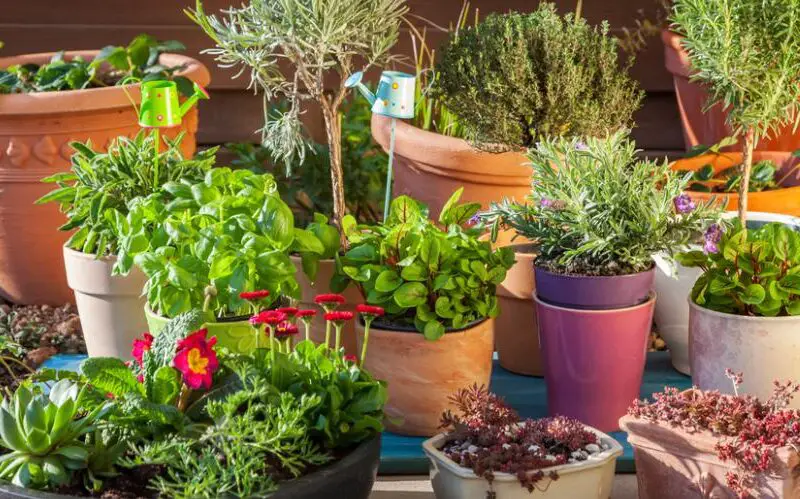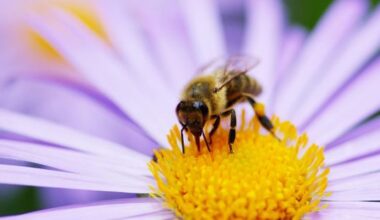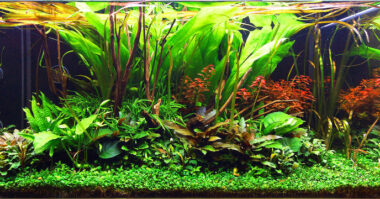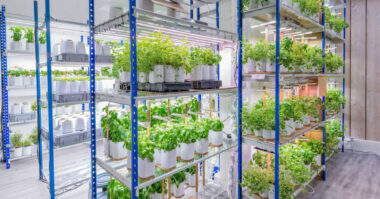Temperature is another essential element in the cultivation of indoor plants. Remember that most of them are of tropical origin and therefore require a minimum of heat. No need however to transform your apartment into a hamam, but know that these plants require a temperature not going below 59°F.
Conversely, some plants need a vegetative rest in the cool and will not withstand the heat of our apartments; flowering plants such as cyclamen or azaleas will see their flowering shortened by a too high temperature. They should therefore be placed in a cool and bright room, if possible with very little heat.
Contents
Heat ensures biological activity
The vital need of a plant is heat! Indeed, heat determines the biological cycle of a plant. It is thanks to it that the cellular activity is important enough to ensure photosynthesis. In their natural state, when temperatures drop, plants are in a state of vegetation.
Their organism then functions in slow motion. This is one of the reasons why they no longer flower. In spring, when temperatures rise, buds appear. Rather simple experiments show that in many cases, in particular for the poppy, it is not the light which is essential for the germination, but the heat!
Attention however not to offer heat in excess to the plants! The plants, except rare exceptions like the cacti, suffer indeed during the periods of heat wave. It is thus necessary to bring them great care at the time of these episodes so that they do not suffer too much. Thus, during strong heats, plants in the ground will have to be watered generously three times a week, at nightfall, to prevent the water from evaporating too quickly. However, for potted plants that cannot find moisture in the soil through their roots, daily watering is preferable.
Differences between the heat of the air and the heat of the plant
An acceleration of biological processes is usually noticed when the temperature rises, which can have both favourable and unfavourable effects. For example, accelerated growth or fruiting counts as an advantage in most cases.
On the other hand, excessive respiration is unfavourable, because the plant devotes less energy to fruiting and therefore produces smaller fruits. Some effects are felt in the short term, while others appear in the long term. In this case, temperature has an immediate effect on the absorption balance of the plant, but the floral induction is determined by the climate over a longer period of time.
The temperatures of the plant and the air are different, because the plant is able to cool itself by evaporation and to warm itself by irradiation. The plants try to reach the optimal temperature and, to achieve this, the balance between air temperature, relative humidity and light plays an important role.
In the presence of a lot of light, the plant heats up, which creates a temperature difference between the plant and the air. To cool down, the plant must increase its transpiration rate. Just like the temperature, the transpiration rate depends on environmental conditions such as light, the level of atmospheric CO2 and relative humidity, but also on the plant species.
Plants are composed of various parts that react differently to temperature. The temperature of the fruit closely follows the air temperature. When the air heats up the fruits too, and vice versa. However, fruit temperature fluctuates less than air temperature; temperature changes occur more slowly (sometimes a few hours more). On the other hand, the temperature of the flowers exceeds that of the air or the leaves, and the petals sweat much less than the leaves.
The upper part of the plant undergoes greater temperature fluctuations than the lower part. The top warms up more easily thanks to the irradiation, it can thus exceed the ambient temperature if the luminosity is high.
What is the right temperature for your plants?
Temperature
It is a key element of success and a factor of growth. By definition, plants in the home are frost resistant, but they often tolerate much lower temperatures than you might think. As the temperature rises, the frequency of watering naturally increases.
The summer sweetness
The temperature rarely causes problems from May to October. During this period, many plants can even be taken out in the garden or on the balcony: citrus fruits, palms, cacti and succulents, bougainvilleas, avocados, bananas, Cymbidium, Clivia, Asparagus, Aspidistra, Chlorophytum, Cycas, Cyperus, Fatsia, Gardenia, Hibiscus, Hypoestes, jasmines, Tolmiea, etc..
Problems related to heating
As soon as the radiators start working, they cause the air to dry out, which is very harmful to plants. However, the higher the temperature rises, the more the plants need a high humidity. This is a paradoxical situation that requires a compromise. Do not exceed 68°F from November to March and make sure that the room temperature drops to around 59°F during the night.
The night freshness
In a house, the temperature is almost always constant, which is quite unusual in nature. Almost all flowering plants need periods of coolness to cause their flower buds to emerge. Therefore, make sure that the room temperature drops by 37 to 41 °F during the night.
Ventilation
Air renewal is very important for the health of plants, but also for your health. For a good feeling of comfort, the entire volume of air in a room must be renewed every hour. As soon as the outside temperature reaches 64°F, do not hesitate to open the window placed near the plants.
On the other hand, avoid draughts and “Scottish showers” with untimely ventilation in the middle of winter (even for short periods). The presence of a small fan is very appreciated by the orchids during hot days.
Summary
The ideal temperature depends on the geographical origin of the plants, plants from temperate regions, such as Lettuce, have an optimum temperature between 59 and 77°F. That of plants from tropical regions, such as chilli pepper, is higher, above 86°F.
The temperature, like the light and the CO2 content of the air, is an external factor that influences especially the level of compensation and saturation of the photosynthesis: when a plant is cultivated in conditions of high temperatures, it requires a higher illumination as well as an increase of the CO2 content; compared to the same plant cultivated at a cooler temperature.








